I am creating and storingthe position of the vertices of a 256*256 grid in a simple for loop like this:
ind=0;
for(i=0, i<256, i++){
for(j=0, j<256, j++){
vertexPosition[ind].x= i;
vertexPosition[ind].y= 1.0;
vertexPosition[ind].z= j;
ind++;
I am sending these vertices to the shader using vertex arrays. However, when drawing this with
glBindVertexArray(VAO);
glDrawArrays(GL_TRIANGLES, 0, 256*256)
glBindVertexArray(0);
I get the following result.

I understand that this has to do with how opengl draws triangles? I am creating my vertices row by row but it seems that this is not how opengl draws the triangles (obviously). I am quite stuck here and would be glad if anyone could point me in the right direction in how to get the grid to display properly
This is how I store the vertex info in buffers
//Terrain Vertex Position
glGenVertexArrays(1, &VAO);
glBindVertexArray(VAO);
glGenBuffers(3, VBO);
glBindBuffer(GL_ARRAY_BUFFER, VBO[0]);
glBufferData(GL_ARRAY_BUFFER, nrOfVertices * 3 * sizeof(GLfloat), terrainVertices, GL_STATIC_DRAW);
glEnableVertexAttribArray(3);
glVertexAttribPointer(3, 3, GL_FLOAT, GL_FALSE, sizeof(glm::vec3), BUFFER_OFFSET(sizeof(glm::vec3) * 0));
//Terrain Normals
glBindBuffer(GL_ARRAY_BUFFER, VBO[1]);
glBufferData(GL_ARRAY_BUFFER, nrOfVertices * 3 * sizeof(GLfloat), normals, GL_STATIC_DRAW);
glEnableVertexAttribArray(4);
glVertexAttribPointer(4, 3, GL_FLOAT, GL_FALSE, sizeof(glm::vec3), BUFFER_OFFSET(sizeof(glm::vec3) * 3));
//Terrain UV
glBindBuffer(GL_ARRAY_BUFFER, VBO[2]);
glBufferData(GL_ARRAY_BUFFER, nrOfVertices * 2 * sizeof(GLfloat), uv, GL_STATIC_DRAW);
glEnableVertexAttribArray(5);
glVertexAttribPointer(5, 2, GL_FLOAT, GL_FALSE, sizeof(glm::vec2), BUFFER_OFFSET(sizeof(glm::vec3) * 6));
glBindVertexArray(0); //End the array here